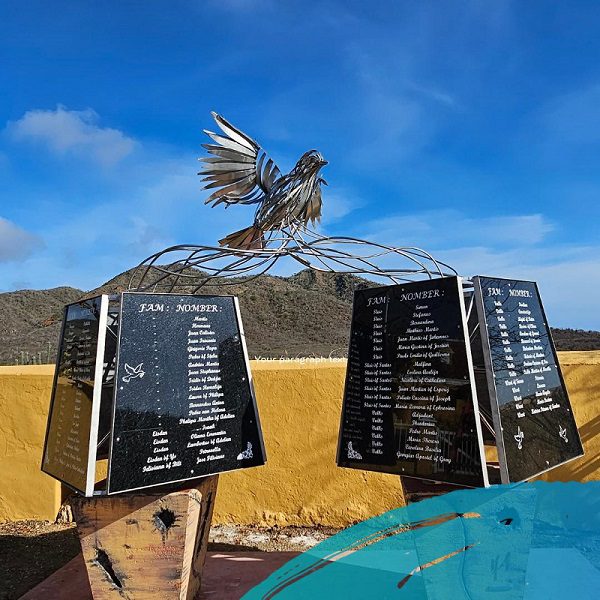The African presence on the island of Curaçao is not as well-known as on other Caribbean islands, like Cuba or Haiti, but Curaçao, first conquered by the Portuguese and later by Holland, has a beautiful history, culture, and language—a mixture of Africans, Indigenous peoples, and Europeans.
The Tula Museum’s Professor Jeanne Henriquez, an activist for African and women’s rights, answered some questions about Black life in Curaçao with the support of local activist Andrews Seraus.
Culture, language, and traditions
Curaçao has 185,483 residents, and the language of most of the people is Creole, but Curaçao is also known as a multilingual nation where people also communicate in Dutch, English, and Spanish.
The culture of the island, said Henriquez, is diverse. At the same time, we have resisted and been able to preserve our ancestral African culture. We have the Kiminá, a multidisciplinary theatrical work that includes music, song, and dance. Our food is varied due to the historical ties of international trade; our local gastronomy is based on seafood, meat, and chicken with a base of Creole seasoning with garlic, onion, green pepper, and tomato accompanied with perǰil or local cilantro. Religion is also an element of cohesion in Curaçao’s diversity: There are evangelicals and Pentecostals, but the local religion is mostly Roman Catholic with adaptations of African or Afro Caribbean beliefs.
The question of where Curaçao’s Africans came from is rather complicated because the official documents don’t match the social and demographic reality. In addition, the wars with Portugal, France, England, and Spain created an African community with roots in the Senegalese coast, Sierra Leone, and Ivory Coast, and revolving around the entire west coast of Africa due to the raids by European buccaneers and the wars between the Congo and Angola kingdoms. There is even talk of historical connections with Mozambique.
Tula Museum photos
Tula Museum monument
Curaçao’s Tula and Maria
In Curaçao, as in other Caribbean islands, Africans rebelled against colonialism. “The truth is that the rebellions of kidnapped Africans began on the high seas,” said Henriquez. “The Dutch archives recorded that one in five ships experienced revolts…Rebellions were also brewing in Curaçao. The largest one was led by Tula and his lieutenants.
“Tula was nicknamed ‘Rigaud,’ after the Haitian general Benoit Joseph André Rigaud, one of the heroes of the Haitian revolution. We don’t know where Tula originally came from, but he knew about the situation in Haiti, where an antislavery revolt led in 1791 by Toussaint L’Ouverture had taken over the colonial regime. Tula, who had escaped enslavement, knew the French Revolution and the revolutionary ideals of liberty, equality, and fraternity.
“A woman named Sablika joined with Tula, as did Pedro Wacao and Louis Mercier, who were Tula’s lieutenants.
“Tula, our great fugitive slave, began his insurrection on August 19, 1795, at the Porto Mari plantation and the Kenepa plantation, at half past eight in the evening, but the colonial army was very powerful, and Tula and his army were defeated. Tula was captured and his execution took place on October 3, 1795, in the Rif (the Reef), on the south coast of the island of Otrabanda.”
Henriquez said Tula’s testimonial words can be found in the archival documents. These are Tula’s words, as recorded by Father Jacobus Schinck: “We have been abused too much, we do not seek to harm anyone, and we only seek our freedom. The French Blacks obtained their freedom, the French occupied Holland, so we must be free here.”
Another self-emancipated Curaçaoan and leader of a slave rebellion was Maria, who was a cook at the Dutch West India Company’s Santa Maria plantation. Maria helped prepare newly captured Africans for disbursement to other plantations. On September 15, 1716, the slaves on the plantation revolted, killing the white personnel who exploited them as well as white women and children in the area. Within 10 days, the Willemstad military was able to put the rebellion down.
One of Maria’s co-conspirators, a man named Tromp, declared under torture that Maria had planned the uprising because she wanted revenge on the foreman, Müller, who was responsible for the death of her husband. Maria was sentenced to death and burned at the stake on November 9, 1716.
The history of Tula and other Africans in Curaçao is occasionally taught in the schools, but there is no established method for promoting this historical material. Most times, the teaching of this falls on cultural groups that specifically deal with issues of African emancipation. For now, all talks of reparations for slavery by the Netherlands appear to be based on calls from Afro Curaçaons.
Like this:
Like Loading…
Related
Source link : http://www.bing.com/news/apiclick.aspx?ref=FexRss&aid=&tid=66fe23e33c0246718821ea4bf9a6c076&url=https%3A%2F%2Famsterdamnews.com%2Fnews%2F2024%2F10%2F03%2Fcuracao-fights-for-african-diaspora-recognition%2F&c=1593655574946355904&mkt=en-us
Author :
Publish date : 2024-10-02 17:11:00
Copyright for syndicated content belongs to the linked Source.
